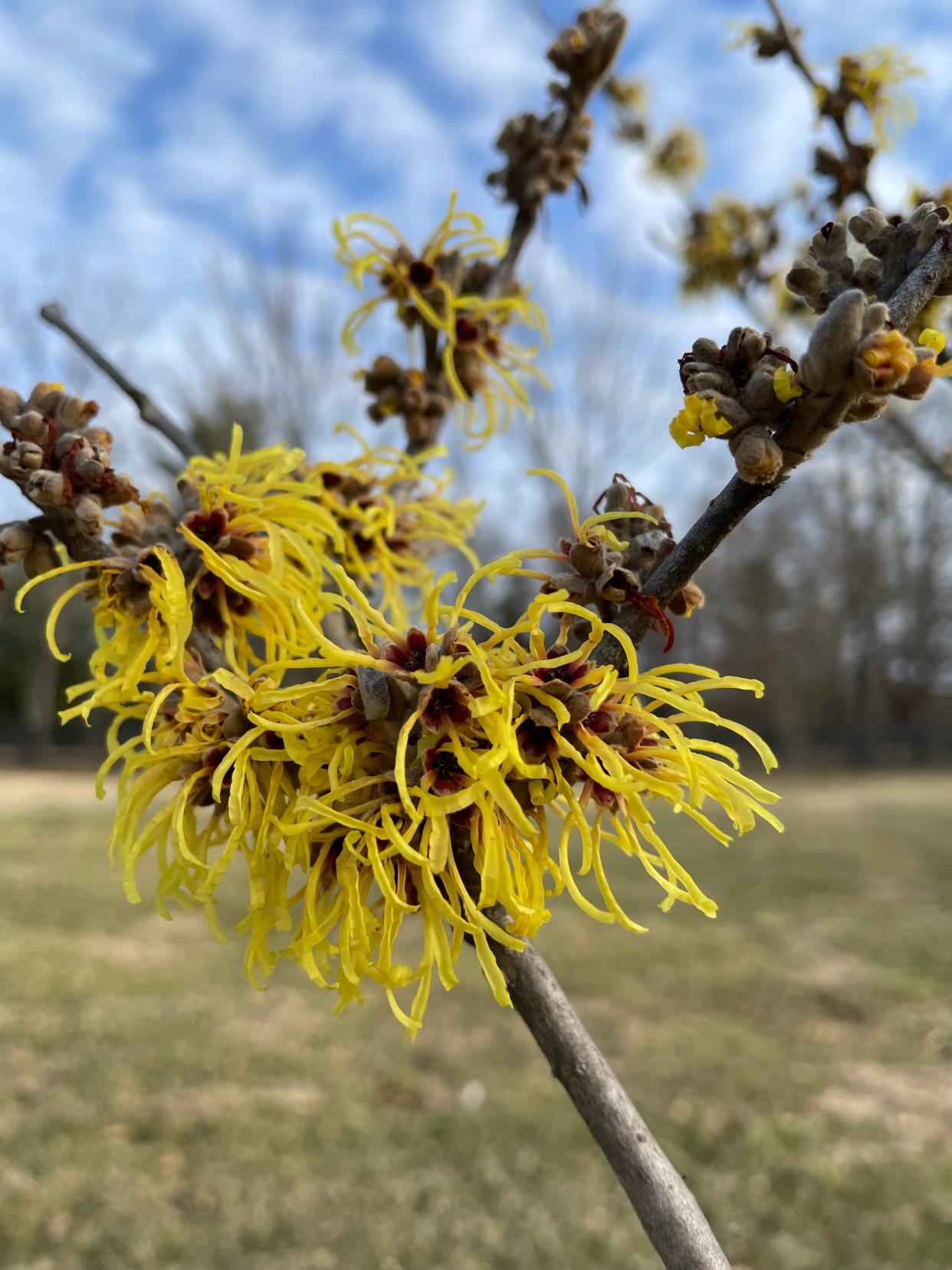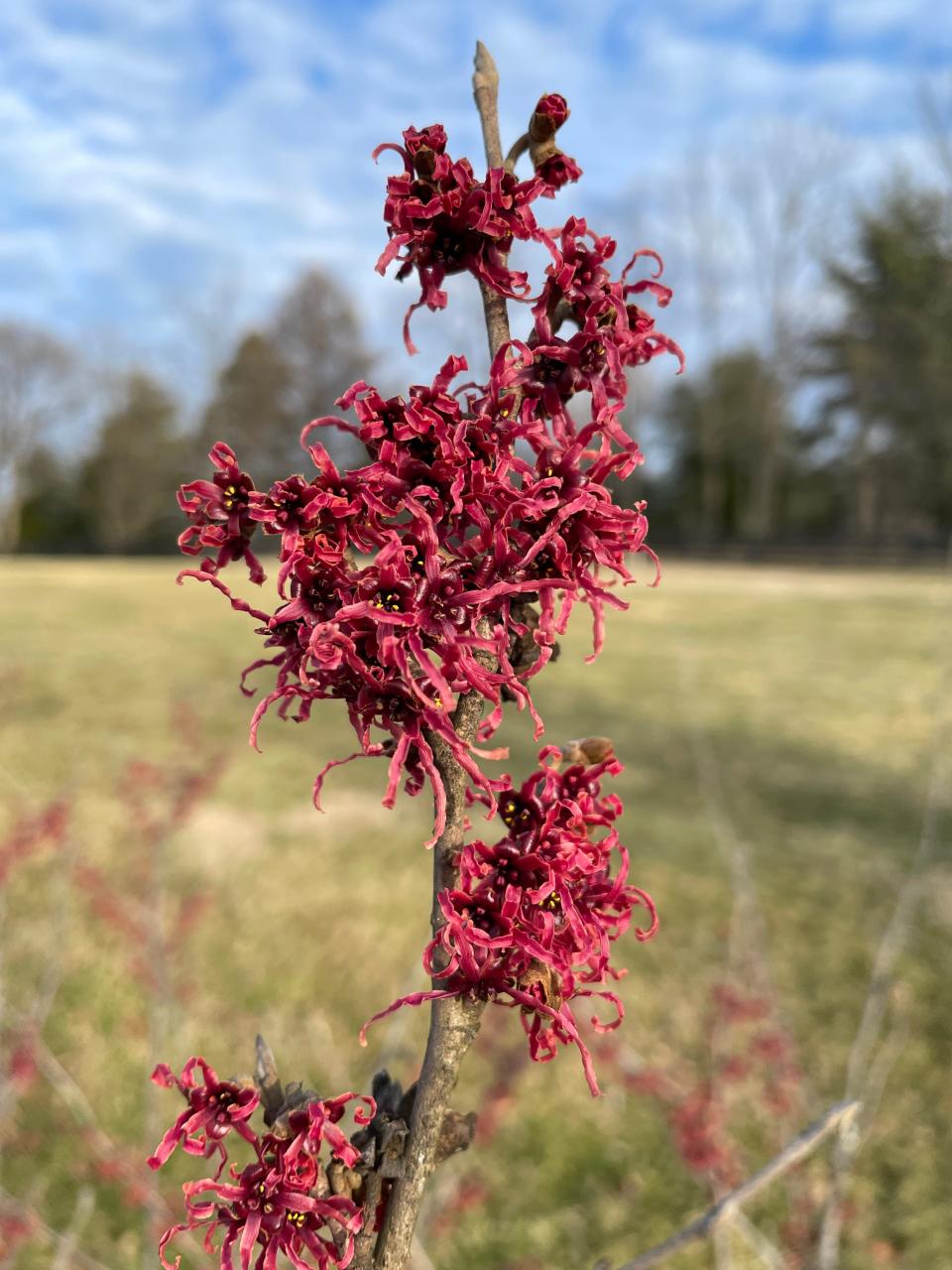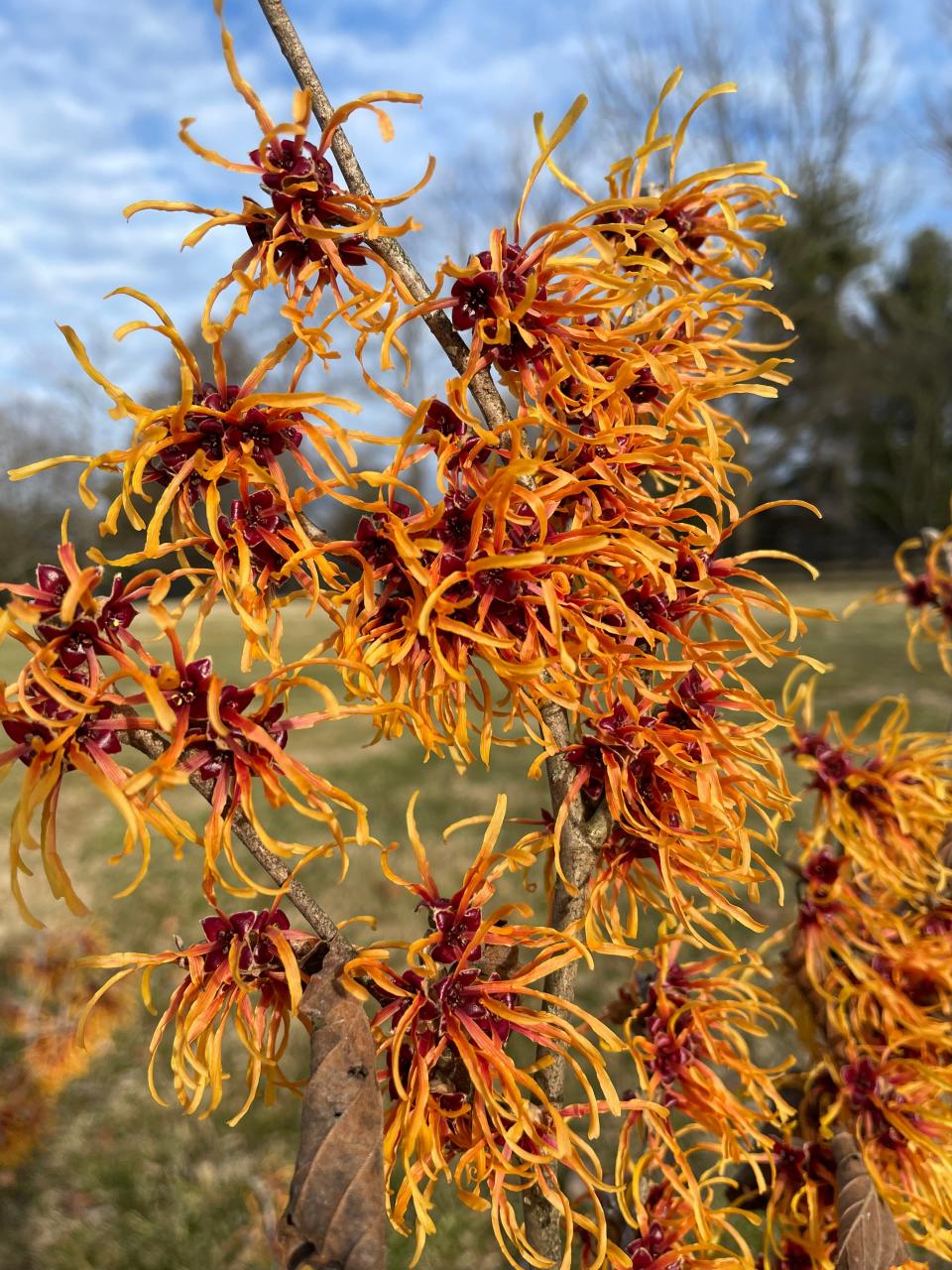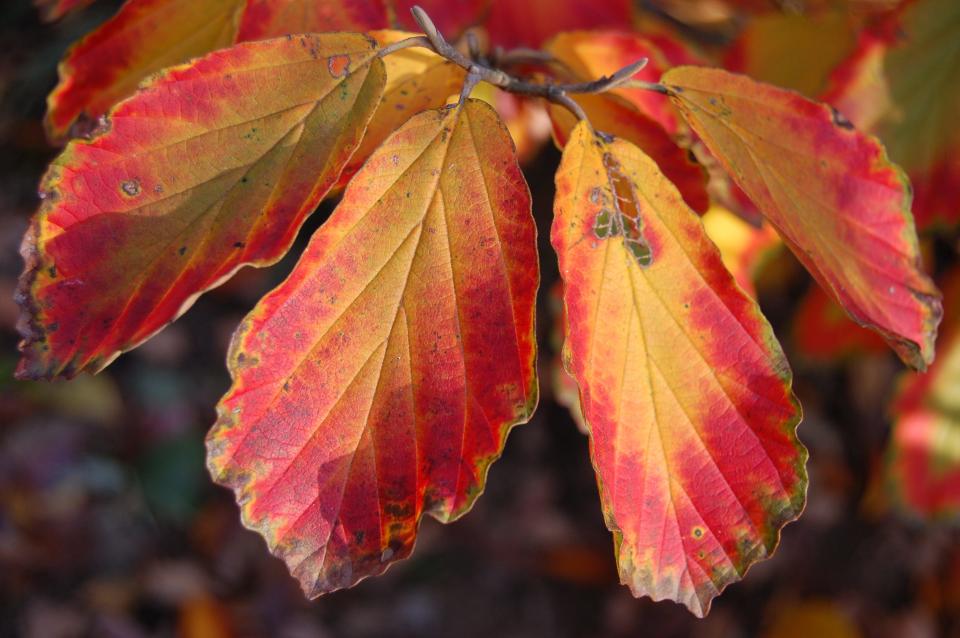Witch Hazel is a necessity in your medicine cabinet. Why it should be in your garden, too

When I was a kid, my mother’s cure-all for everything from a touch of sunburn to poison ivy and even a mild fever was witch hazel lotion. It came from the Fuller Brush man who sold his wares from door to door, and along with the brushes and dustpans you could get a bottle of this strange, turquoise-ish lotion.
Now like most kids, I was generally pretty uninterested in anything that came out of a tube whether it was sunblock, toothpaste, or a strange, turquoise-ish lotion. But when she popped off the white cap and gently spread some of its contents across your skin, it was like the breath of heaven here on earth. Its fresh, slightly astringent aroma and instant cooling feel just made everything better.
Even now, 50-plus years on down the gravel road, I can still remember the involuntary, bodily sigh generated by a quick application of that strange, turquoise-ish lotion.
Never did it cross my mind that the stuff had any connection to a plant that would capture my heart the way its lotion captured the rest of me as a child.
According to my exhaustive research, the essentials of witch hazel come from extracts of dried bark and leaves and can be used as a cure for about a zillion and one things. It seems to be generally soothing for many skin ailments from dryness to irritations and the like.

You may like: Ode to the Dandelion: Why this vilified weed is one of the adaptable garden plants
Witch hazels are funny plants. They are grown in gardens for their amazing flowers ... that have flower petals only about as big as a modern-day false eyelash. And while modern-day false eyelashes seem to be approaching the size of big wave surfboards, I think you get my point. Witch hazel flower petals are quite prized for their show but they are little thread-like affairs.
Seems strange though, that such a diminutive and dainty flower would get so much attention. Most things grown for showy flowers tend to be the “flowers as big as your head” affairs but that’s not the case with witch hazels. Their flowers are rather small, but on some plants, they are produced in ridiculously large quantities. And then there’s the added advantage that they just happen to bloom in the middle of winter.
Belonging to the genus Hamamelis, there are a handful of species native to both North America and Asia. Common witch hazel (H. virginiana) is native across the eastern U.S. and is a bit of an outlier in that it produces its fragrant, yellow flowers in October and November. The vernal witch hazel (H. vernalis) is native to the central part of the U.S. and usually flowers copper to pale orange from late January through early April.

Outside of North America, you can find the Chinese (H. mollis) and Japanese (H. japonica) witch hazels that resemble our vernal witch hazel in flower form and timning. The Asian forms tend to have larger and showier flowers that range from yellow to orange and fairly bright red. These days, most of the showiest forms are hybrids of the winter bloomers that fly under the nomenclatural flag, H. x intermedia. All are wonderfully fragrant when in bloom.
Most witch hazels form large shrubs that mature between about 8-feet and as much as 30-feet tall, though 8-10-feet is pretty typical for winter bloomers. The earliest in my garden ("Early Bright") a bright golden yellow, sometimes starts to bloom as early as New Year’s week. The latest in my garden, "Arnold Promise," can sometimes wait until mid-March to put on its show. Both have outstanding fragrance, excellent yellow/orange/red fall foliage color, and thrive in anything from full sun to light shade.
You may like: True or false: 6 questions to ask before you choose native or exotic plants for your garden
One of the amazing things about witch hazel flowers is that because they tend to bloom through winter, they have evolved an amazing ability to withstand frigid temps while in flower. Unlike the early spring blooming magnolias that often get fried by a spring freeze or frost, a witch hazel in full flower can handle temperatures down to the teens without damage. Faced with a deep freeze, the flowers simply curl up and ride out the cold snap. Then, once things warm up, the petals simply unfurl again to continue the show.
Single winter-blooming witch hazel can put on a show for well more than a month.

In the Cappiello household, witch hazels fill a central role in coaxing both my wife and me out of the winter season, horticultural doldrums. A cut branch forced into bloom in a vase on the dining room table helps keep our focus forward to lighter, brighter and more colorful times. And now, after a number of years of growth on our "Early Bright," its upper branches have reached the height of our second-floor bedroom window. Anytime those flowers are showing even the slightest hint of color, we have that window wide open to fill the house with witch hazel perfume.
So why isn’t everyone growing witch hazels in their home gardens? Beats me. I think I’ll go call the Fuller Brush man and ask him.
Happy Gardening!
Paul Cappiello is the executive director at Yew Dell Botanical Gardens, 6220 Old Lagrange Road, yewdellgardens.org.
80 Years of Architecture at Yew Dell
WHAT: Join Yew Dell for its 20-year anniversary celebration with an evening all about architecture. Yew Dell’s primary architecture partners for the last 20 years, Ross Primmer and Roberto de Leon of de Leon & Primmer Architecture Workshop, will present a lecture and walk covering Theodore Klein’s whimsical castle, Cotswold’s styled home and outbuildings, and how they provided the inspiration for DeLeon & Primmer’s award-winning new architecture seen on the grounds today. Enjoy an evening of cocktails, hors d’oeuvres, an architecture lecture and walk, and take home a whole new appreciation of the magic of Yew Dell.
WHERE: Yew Dell Botanical Gardens, 6220 Old La Grange Road
WHEN: March 15, 6-8 p.m.
COST: $50-$60
MORE INFORMATION: yewdellgardens.org
This article originally appeared on Louisville Courier Journal: How to grow and care for Witch Hazel plants: Tips and advice

